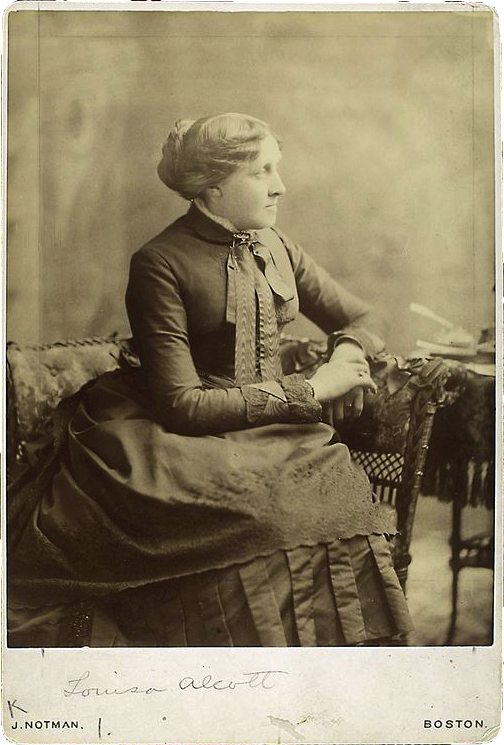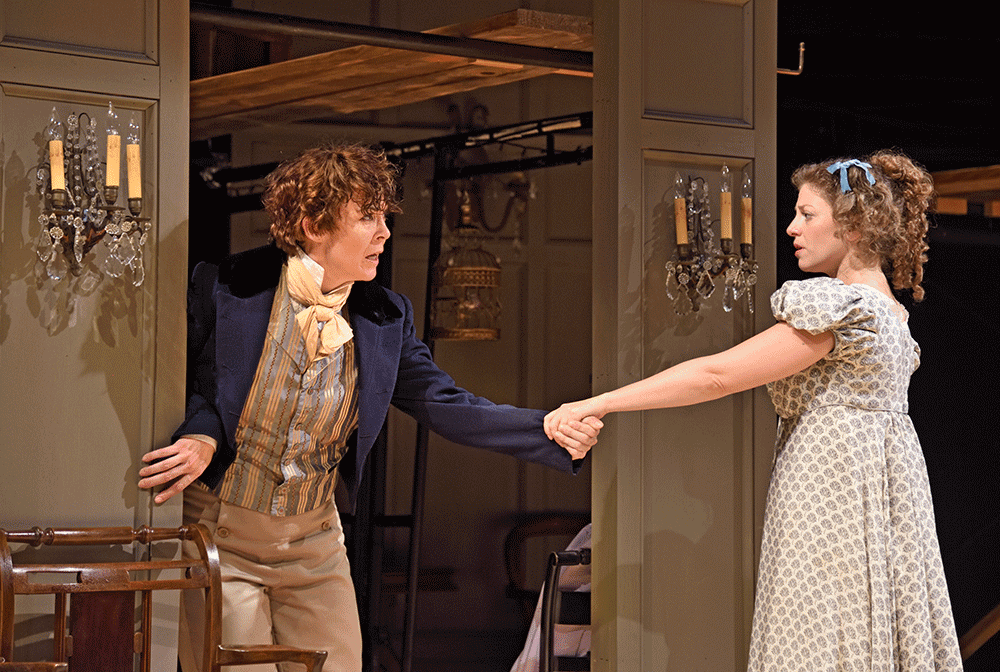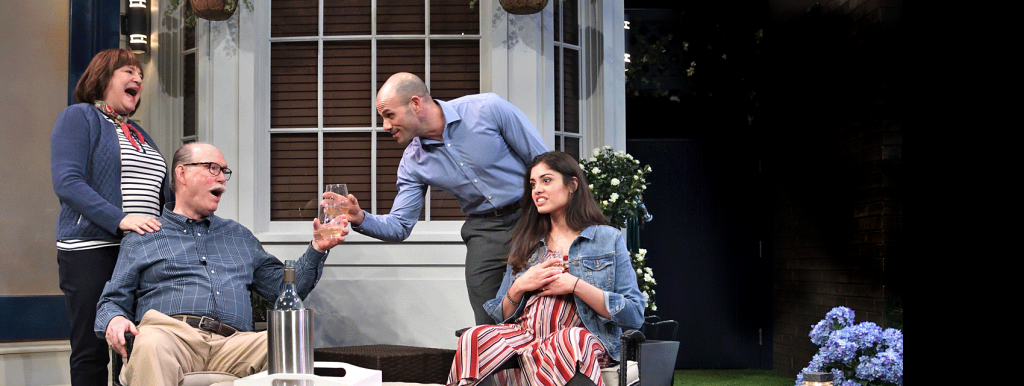How Kate Hamill venerates (and violates) the classics
By Laura Weick
In the official script of Ms. Holmes & Ms. Watson – Apt. 2B, the title page includes the credit: “Cheerfully desecrating the stories of Sir Arthur Conan Doyle.” Not “adapted from the stories by Sir Arthur Conan Doyle.” “Cheerfully desecrating.”

Any theater that chooses to produce this play must include that tagline in their billing. It’s clear that this “cheerful desecration” is an integral part of playwright Kate Hamill’s vision, so much so that it affects all promotion of the play.
So, what exactly does Hamill mean when she says she is “cheerfully desecrating” a classic?
In a 2019 interview with Christiane Amanpour, Kate shared her thoughts on adapting iconic stories. “I believe in creating something that’s much more surprising and theatrical and embraces the fact that especially in a piece of theater, it doesn’t have to be a museum piece,” she said. “It doesn’t have to sort of live in this cold marble altar and be a dead thing. It could be living. We can sort of scribble on it with crayon and see what it means now. So, I try to think of it as a collaboration between myself and an author who is currently dead.”
Sherlock Holmes is far from the first character in the Western literary canon that Hamill has transformed for the stage (the aforementioned interview happened before Ms. Holmes & Ms. Watson even premiered!) From The Scarlet Letter to Dracula to The Odyssey, Hamill seems to move through every piece of literature you had to read in English class with both a clergywoman’s reverence and a demolition expert’s sledgehammer. Even A Christmas Carol, the 181-year-old holiday classic Trinity Rep stages each year, isn’t safe. Hamill’s website lists a script titled Scrooge for Senate as “available for development.”
In her adaptation of Little Women, Hamill puts the magnifying glass on Jo March’s gender-nonconformity. In the same Amanpour interview, Hamill suggested that her personal interpretation of Jo is queer, possibly even trans or nonbinary. And (spoiler alert) Hamill’s version of the character gets a different ending than in the book. Jo does not marry, nor does Jo give up writing, as is what happens in the original novel.
“Alcott was writing for her day and she was a genius,” Hamill said. “She was so good at creating this sort of witty world, at creating deep, moving relationships, at depicting the epic scale of these seemingly small lives. But I thought, well, if I’m having — writing a play that young people are coming to today, I want them to look on the stage and go, I don’t have to be heterosexual. I don’t have to fit into my gender role. I can be the hero of that story and I can find a way through.”
But this is not some sort of revisionist history, but rather an effort to at least partially honor the source material. Or as Hamill said, “collaborating with an author that is currently dead.”

It’s no secret that Little Women author Louisa May Alcott based Jo, Amy, Meg, and Beth on her and her sisters growing up. But unlike Jo in the original novel, Alcott never married, a rarity for a woman living at the time. Jo only got married in the book because Alcott’s publishers said Little Women would not sell otherwise.
The pièce de résistance comes from Alcott’s own words. In an 1860 letter to a friend, Alcott wrote, “I was born with a boy’s nature and always had more sympathy for and interest in them than in girls.” Twenty-four years later, Alcott said in a published biography by her contemporary Louise Chandler Moulton that “I am more than half-persuaded that I am, by some freak of nature, a man’s soul put into a woman’s body.”
Because of these quotes, some scholars have suggested that Alcott would have identified as transgender or nonbinary in a modern setting. Others believe Alcott was very much a woman, just a tomboy who felt limited by 19th-century gender roles. While there’s no way to verify either since Alcott has long passed, these interpretations concurrently turn assumptions on their head and reflect truths with which we might not be familiar. It’s what makes Hamill’s work so compelling.
Little Women is just the start. What nearly all of Hamill’s adaptations have in common, other than a dry wit and an eccentric sense of humor, is a keen focus on gender, gender roles, and the relationships between people of different gender identities. Often (but not always), Hamill examines the relationships between men and women.
Hamill’s most popular play is an adaptation of Jane Austen’s Pride & Prejudice. The script is written so most characters can be performed by actors of any gender. Actors are also to be cast in multiple roles.
Hamill told The Interval that in the world premiere production, “the men who play women are also the women who enforce patriarchal standards on the other women. They’re the women who say, ‘This is what a perfect woman is. This is what you should do,’ and some of them are more sympathetic, like Charlotte, and some of them are less sympathetic, like Mary.”

Not every production followed this exact formula, but it moved other theaters to consider gender
while casting. At Trinity Rep, this resulted in both Lizzy Bennet and Mr. Darcy being played by women, for example. Genderbending isn’t new to theater, but Hamill forces both artists and audiences to think about these decisions in ways that both revere and revolt against the original text.
A final note: You may have noticed that we didn’t mention much about how exactly Hamill transfigures the characters you remember so well from Sherlock Holmes stories. That is what you came to the theater to see. We don’t want to give too much away, because what is a mystery without a bit of … suspense?
But we will say this: There are only four actors in this play. Two are women playing roles typically portrayed by men. One is a woman playing roles typically portrayed by women. The lone man in the cast plays a multitude of traditionally male roles, but there is one you’ll leave the theater remembering the most. While not as overt in its subversion of gender as Pride & Prejudice and Little Women, I suspect the gendering of each character is intentional here too.
We ask you to come to your own conclusions, even if they differ from those of the actors, the director, and even Hamill herself. Not just for this show, but every show at Trinity Rep. After all, isn’t starting a conversation what the theater – hell, art in general – is all about?
Ms. Holmes & Ms. Watson – Apt. 2B runs October 3 – November 17, 2024 in the Dowling Theater. Click here to learn more and book your tickets.

